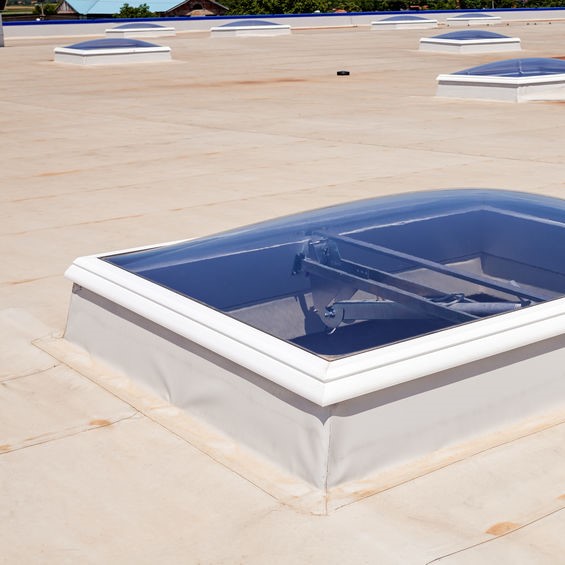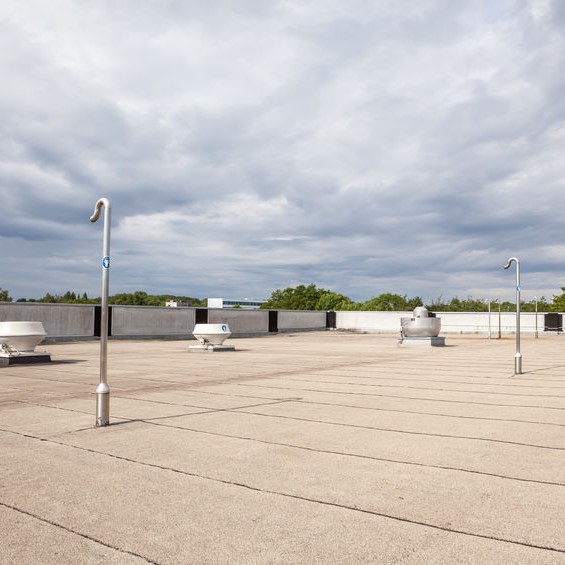
What is elastomeric roof coating?
Elastomeric roof coating is an inexpensive way to save your commercial building roofing. A commercial building takes a lot of abuse because of the height and overall size. It gets a lot of UV rays, hard rains and high winds that can shorten its life expectancy. If the recommended inspections are done that find minor issues are done, those small issues can be repaired with elastomeric roofing coating and keep them from becoming big problems that require a new roof.
Elastomeric roof coating is a liquid coating that is applied like paint to low-slope roofs but is more effective that just painting a roof. There are four key types of Elastomeric roof coatings, each having a specialty depending on the roof that it is being applied to. The four types of elastomeric roof coatings are:
- Acrylic: The best elastomeric roof coating for sloped roofs because of longer lifespan and eco-friendly.
- Butyl: This elastomeric roof coating is water resistant and performs as a vapor barrier. It is ideal for flat roof repair, low-sloping roofs like built-up PVC and single-ply roofs.
- Polyurethane: This elastomeric roof coating is the best for roofs with an EPDM rubber coating because it doesn’t require a high PH rinse. It also is an excellent choice for modified bitumen and single ply roofing.
- Silicone: This is the best elastomeric roof coating for polyurethane foam roofs because of its high effectiveness in repairing weathered roofing and for re-coating a roof that has an existing silicone coating.
What is the best elastomeric roof coating?
It depends on what type of climate and environment the commercial structure is located. As we broke them down earlier, each of the four elastomeric roof coatings has its specific features and they overlap with each other too.
Butyl is a durable elastomeric roof coating that also performs as a vapor barrier. We recommend acrylic elastomeric roof coating for sloped roofs, has a longer lifespan than Butyl and is better for environmentally friendly concerns. If the existing roof has an existing EPDM rubber surface polyurethane coating doesn’t require a rinse with a high PH balance, making it the better option.
How long does elastomeric roof coating last?
The tradition of commercial roofing used to be to tear off the old roof when installing a new roof. This is an expensive process because it almost like having two roofing jobs performed. This would be done every twenty years if the building owner saw fit to replace the roof and could afford it. Then, in the late nineteen fifties, elastomeric roof coating was introduced, and it has evolved into a leading product to coat commercial and industrial roofs, extending their lifespan an additional fifteen years or longer.
Do elastomeric roof coatings work?
Elastomeric roof coating benefits have proven this to be the better choice for many commercial and industrial roofs. Those benefits include:
- Watertight – The major benefit of elastomeric roof coating is the water resistance it provides. With this roof coating installed, moisture doesn’t seep into walls like other coatings allow. It works on multiple surfaces like brick, concrete, masonry, metal, stucco, and some types of wood.
- Dense – Elastomeric roof coating is ten times thicker than paints with the feel and durability of a tarp.
- Longer Lifespan – The making of elastomeric roof coating will last longer than an ordinary paint.
- Flexible – Since elastomeric roof coating is a flexible, stretchy material that moves with the structure, making it ideal for locations where the climate can affect a building to shift.
Can you walk on elastomeric roof coating?
Absolutely! Because there are no seams involved with elastomeric roof coating, that eliminates any weak areas that would crack with other roof coatings. This durable yet flexible roof coating is safe for foot traffic, both for the roof and the people walking on it like electricians, HVAC technicians, and plumbers.
How do you apply elastomeric roof coating?
After preparations are done, such as filling any cracks and then sweeping the roofing surface clean of debris, Elastomeric roof coating installation is done in just three steps.
- Apply a base coat by spray or roller
- Let the base coat sit eight to twenty-four hours to dry thoroughly
- Apply a topcoat in a cross-cross pattern until covered
- Allow topcoat to thoroughly dry before allowing foot traffic

Final Thoughts on Elastomeric Roofing Coating
Elastomeric roof coating not only will extend your roof’s lifespan, but it will help with energy expenses too by blocking the sun’s hot UV rays. It is weather resistant and can hold up to those UV rays. By keeping your building cooler, this will help keep energy expenses in line.
If elastomeric roof coating is your choice, be sure to find a commercial roofing contractor that has experience working with this material. If it is not installed correctly, you could experience problems down the road. Call 618-207-2057 today for elastomeric roofing in St Louis, IL.
